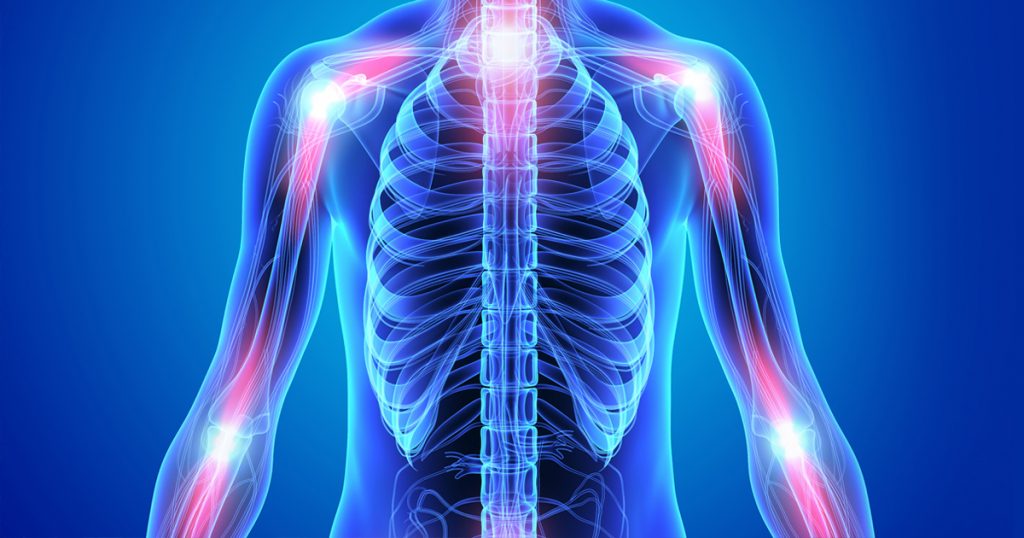Inflammation can help to eliminate infection, but excessive inflammation can cause damage to the body. The sensor proteins that trigger an inflammatory immune response must therefore be carefully regulated. Some intracellular immune-sensor proteins detect components in a cell that become abnormal or altered during a cellular crisis. Signs of cellular crisis are sometimes produced in the absence of an infection, so mechanisms are needed to prevent the proteins from triggering an inappropriate inflammatory response. Writing in Nature, Sharif et al.1 report a structural study that investigates an immune-sensor protein called NLRP3, revealing that a protein called NEK7 acts as a ‘licence’ that enables this protein to cause inflammation.
When an immune sensor recognizes a hallmark of infection in the cytoplasm, this can activate the protein and lead to the assembly of a multiprotein complex called an inflammasome. The activation of proteins that function downstream of an inflammasome can potently drive both inflammation and cell death2. Different types of inflammasome can form depending on the sensor components involved. Certain inflammasomes respond to a highly specific trigger: for example, those in mammalian cells containing the sensor protein NLRC4 respond to the presence of the bacterial protein flagellin3,4.
Proteins that are normally present in mammalian cells do not seem able to trigger the accidental formation of NLRC4-containing inflammasomes, given the lack of reports of such aberrant events. By contrast, inflammasomes that contain NLRP3 are activated when NLRP3 recognizes — by an as yet unknown mechanism — hallmarks of cellular catastrophe, such as extremely low concentrations of potassium in the cytoplasm, or signs of dysfunction in organelles called mitochondria2. Such events can arise from tissue damage that is unrelated to infection, and NLRP3 activation in such cases has been implicated as a possible cause of inflammatory diseases such as atherosclerosis.
It is widely accepted that the tightly regulated formation of NLRP3-containing inflammasomes occurs in two steps. In the first step, NLRP3 is primed for action by other immune-sensor proteins called TLRs, which can detect components of microorganisms. This priming step occurs in two ways2: NLRP3 can undergo a modification, such as the addition of a phosphate group or the removal of an attached ubiquitin protein. Further priming is achieved by a rise in expression of the gene that encodes NLRP3, increasing the chance that NLRP3 will detect any abnormalities. The second step, activation, then results in NLRP3 proteins binding together to form part of a disc-shaped inflammasome complex that is probably similar to those of other inflammasomes containing proteins of the NLR family (which includes NLRP3 and NLRC4)5,6. This activation step occurs during a cellular catastrophe, but the biochemical and structural mechanisms involved are unknown.
Researchers have long sought to determine the structure of NLRP3 as it forms an inflammasome, in the hope of gaining insights into how this protein functions. However, such efforts have been unsuccessful, perhaps because unknown protein partners that interact with NLRP3 were missing from earlier attempts.
The discovery7–9 that the enzyme NEK7 is essential for NLRP3 signalling provided a missing part of the puzzle. NEK7 regulates processes that occur during cell division, such as the breakdown of the nuclear-envelope structure10, so it was surprising to find that it has a separate role in inflammation. This suggested that NLRP3-containing inflammasome formation doesn’t occur during cell division because NEK7 is unavailable to aid inflammasome assembly8. NEK7 regulates NLRP3 signalling by binding to a region of the protein known as the LRR domain8,9. However, why such an interaction between NEK7 and NLRP3 is essential for inflammasome formation has remained elusive.
To tackle this question, Sharif et al. used cryo-electron microscopy to investigate the structure of a human NLRP3 interacting with NEK7. The authors’ structural data reveal that NLRP3 and NEK7 bind to form a dimer in which NLRP3 is in an inactive conformation. In this state, the LRR domain of NLRP3 has a lobed, semicircular shape (Fig. 1), and the carboxy-terminal region of NEK7 nestles in the inner curve of the LRR….







